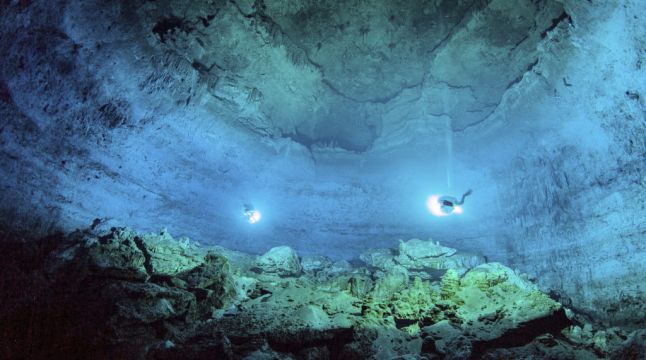The Mexican government has invoked national security powers to forge ahead with a tourist train along the Caribbean coast that environmentalists say threatens extensive caves where some of the oldest human remains have been discovered.
President Andrés Manuel López Obrador is racing to finish his Maya Train project in the remaining two years of his term over the objections of environmentalists, cave divers and archaeologists.
The government had paused the project earlier this year after activists won a court injunction against the route, because it cut a swath through the jungle for tracks without previously filing an environmental impact statement.
But the government invoked national security powers to resume the track laying.
Mr López Obrador said the delay had been very costly and the decree would prevent the interests of a few from being put above the general good.
In November, his government had issued a broad decree requiring all federal agencies to give automatic approval for any public works project the government deems to be “in the national interest” or to “involve national security”.
Jose Urbina Bravo, a diver who filed one of the court challenges, said: “I never knew we lived in a country where the president could just do whatever he wants.”
Activists say the heavy, high-speed rail project will fragment the coastal jungle and will run often above the roofs of fragile limestone caves known as cenotes, which — because they are flooded, twisty and often narrow — can take decades to explore.
Inside these water-filled caves are archaeological sites that have lain undisturbed for millennia.
Caves along the Caribbean coast have yielded treasures like Naia, the nearly complete skeleton of a young woman who died around 13,000 years ago.
She was discovered in 2007 by divers and cave enthusiasts who were mapping water-filled caverns north of the city of Tulum, where the train line is heading.
“Just in this one stretch of 60 kilometres (36 miles) of planned train tracks, there are 1,650 kilometres (1,025 mile) of flooded caves full of pure, crystalline water,” said Octavio del Rio, a diver and archaeologist who has been exploring the region for three decades.
“I don’t know what could be more important than this. We are talking about the oldest remains on the continent.”

The 950-mile Maya Train line will run in a rough loop around the Yucatan peninsula, connecting beach resorts and archaeological sites.
Government archaeologist Manuel Perez has acknowledged that an almost fully preserved small Mayan temple — complete with wood roofing — has been located in a cave near the train’s path. He has suggested the route be changed.
But Diego Prieto, the head the government’s National Institute of Anthropology and History, appeared to rule out changing the path of the train, for which workers have already cut down a 50-metre-wide swath of jungle dozens of miles long. He suggested most of the relics, in the few months left before the train is built, can simply be picked up and moved.
“The problem isn’t the route … even if the route is changed, there are going to be lots of discoveries anyway,” said Mr Prieto. “The problem is the archaeological work to gather the material found, and conserve those structures that should remain on site.”
The caves along the coast were probably dry 13,000 years ago, during the last ice age, and once sea levels rose at the end of the ice age and they flooded, they acted as time capsules.
The government’s plan is to sink beams and cement columns through the roofs of the caves, possibly collapsing them — and the invaluable relics they hold — to support the railway.
Fernando Vázquez, spokesman for the government tourism agency building the train line, said: “There are people who in essence are not necessarily working in favour of the environment, but rather are specifically activists against the Maya Train.”







